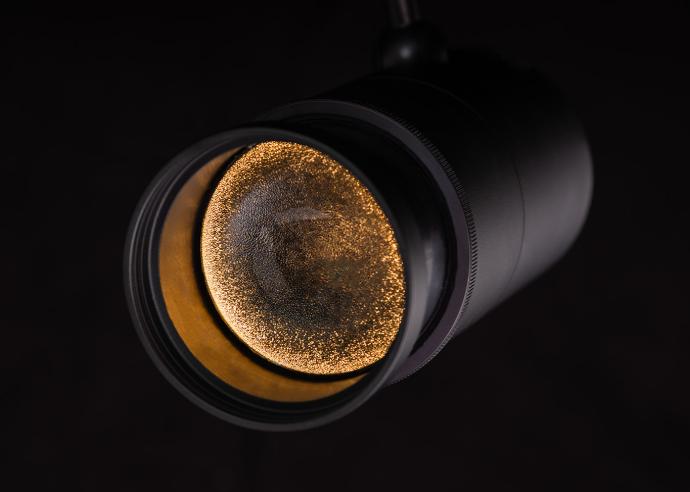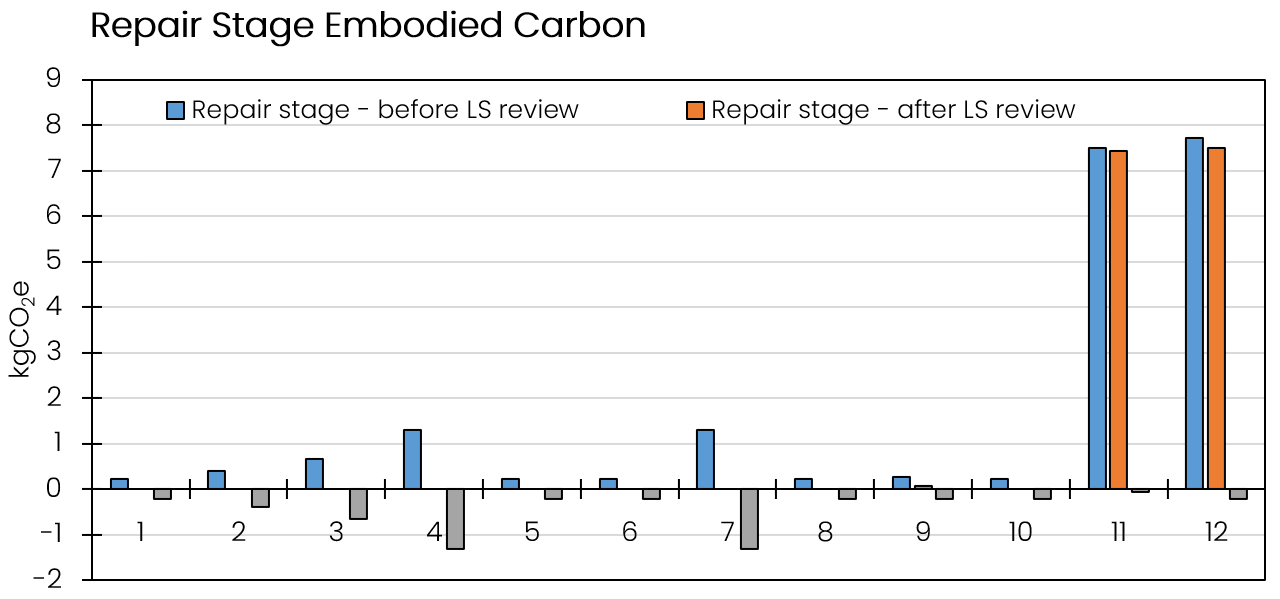Light Source Review 2025
Stoane Lighting have introduced new light sources for our COB based product range. These same light sources will also be used in our derivative and bespoke products.
Stability and consistency in our light source selections are important factors for Stoane Lighting, so they don’t change very often. Only after we are convinced of the need and benefits following thorough research market offerings and extensive testing and evaluation.
There are two primary factors in our light source selection: light source quality and energy efficiency. Whilst our aim is to design great luminaires, what most people want and notice is the right light. We need great quality light for our lit environments spanning all sorts of specialisms from hospitality to museums and galleries . We also live in a world where energy efficiency really matters; it matters to our specifiers, it matters to us and it matters to policy makers. Whilst having our cake and eating it would be nice, we know that you cannot have the best quality of light and the highest efficacy in one. We also know that it’s also about the application as the balance will tip from highest quality to highest efficacy depending on what you are lighting.


We've carefully selected two primary light sources to give specifiers a clear choice between exceptional colour quality and maximum efficiency.
Each has been rigorously evaluated and integrated to deliver the balance of light quality, longevity and efficiency that Stoane Lighting is know for.
SL98
This is our high CRI performance offering, delivering outstanding colour rendering with a typical CRI above 98 and R9 values up to 99. Despite its focus on colour quality, SL98 maintains impressive efficacy and a 94,000 hour lifetime (L90 B0) providing both colour quality and endurance in equal measure.
SL90
This is our high efficacy module with a CRI above 90 (typically >95) and efficacies typically exceeding 110lm/W and reaching up to 163lm/W, it's designed for applications where performance and sustainability are key priorities.
In both cases we offer 4, 6, 9 and 14mm light source diameter options which allow us to cater for the variety of beam angle and luminous flux demands of our lighting equipment.
Colour quality
This is perhaps not the place to make recommendations on lighting quality metrics but we think fair to say that the CRI Ra value doesn’t give us a full picture of lighting or colour quality. Looking at the light and using it to light different objects and colours, listening to perspectives and experimenting, has been our process in making our selections.
When specifying lighting equipment, you first have to take a good look at the data available. For this reason, for both SL98 and SL90 in all available CCTs we have full colorimetry information available. As a judge of quality, we happen to think that TM30 performance along with a look at colour point and ∆UV gets you a good indication, but we also provide CRI and CQS along with associated diagrams for your scrutiny.
Thereafter the best test is to see it for yourself with a sample for evaluation. We believe this is especially important with artwork and other colour quality sensitive applications where perception can also be subjective.
Note SL90 uses a phosphor technology that delivers significant efficacy improvements, the spectral power distribution will look different to what you are used to. This is a KSF phosphor approach, read more here
What if you prefer a different source?
We've invested significant time in selecting light sources for our SL98 and SL90 ranges, offering both high CRI and high efficiency options to suit a wide range of applications.
We also understand that lighting design is subjective and that every project has its own priorities. As a manufacture-to-order company, flexibility is part of our DNA.
Whether you are looking for a particular brand, part number or spectral profile, we'll work with you to deliver exactly what you need. We can offer a broad range of custom source options including special SPDs, Tunable White, RGBW and warm tone options including 1800K and 2400K.
Sustainability and Efficacy
It’s clear to us that the specification community and the end users are motivated to reduce the energy consumption in their designs/buildings. It’s also clear to us that policy makers have been focusing in on light source/luminaire efficacy. The single lighting regulation raised the bar in Europe and through corresponding UK regulation. The UK government consulted on introducing MEPS (Minimum Energy Performance Standards) and we recognise that UK building regulations are likely to change soon with the ‘Part L’ bar being raised still higher. Read more about Part L here
The SL98 average efficacy improvement across the range is 3%. Our efforts here on maintaining quality but aiming for enough improvement to keep up with changing regulations.
The SL90 average efficacy is up 21% on our previous 90CRI offering. Some 3000K sources are over 160lm/W.
Sustainability and light source lifetime
With careful thermal management and product design, the SL90 and SL98 will achieve L90 B0 in excess of 94,000 hours.
This increase in lifetime will reduce the possibility of light sources requiring replacement and has supported a reduction in embodied carbon totals calculated according to TM65.2 analysis of our products.
The graph below shows the embodied carbon emissions avoided (calculated following TM65.2 mid-level method), thanks to the light sources’ longer lifetime and consequent possibility to avoid a repair stage during the luminaire’s lifetime. The graph has been produced considering a sample of 12 Stoane Lighting luminaires of different types.

Considering a product which had environmental impacts assessed with LCA (Life Cycle Assessment) and published in an EPD (Environmental Product Declaration), prolonging the lifetime of the LED and avoiding its replacement during the repair stage is confirmed to reduce the carbon emissions also by a more rigorous assessment such as LCA, as shown in the table below.
ZTA.50.Surface with Old Light Source | ZTA.50.Surface with New Light Source | |
Repair stage | GWP Total (kgCO2e): 8.04 | GWP Total (kgCO2e): 5.83 |
Beam consistency
Stoane Lighting have opted to keep the same light source diameters and for the most part, the same optics. This serves to keep functional performance close to how it has been which we hope helps with specification stability during the light source changeover.
We have also introduced some new optics to the offering in the 70mm products for tighter beams All ZTA.70 products and exterior products using 70mm optics now take an optic offering a Very Narrow 7º beam.
Lumen density
Whilst light source diameters remain the same, some of the light sources we use can be run at a higher drive current so higher flux is possible from smaller diameters. The main benefit is in opening up capability in higher flux products such as ZTA.110 to have tight beams with higher output.
What is KSF and how is it used in SL90?
KSF (Potassium Fluorosilicate (K2[SiF6])) is a narrow band red phosphor development that is used to increase LED light source efficacies. There are several phosphor recipes and differing proportions of KSF phosphors. Traditional LED phosphors do have an effect on the efficacy gains possible, more KSF equating generally to higher efficacy potential. The challenge with KSF phosphor based LEDs has been both thermal and spectrum/colour point stability, as these phosphors change in temperature. As the luminaire is turned on, the colour point can shift a little or more depending on how much KSF is used. It’s for these reasons that Stoane Lighting use a light source in SL90 with a conservative KSF mix, it offers some efficacy improvement whilst not having the large colour point drift with temperature that some can.
Transparency
Stoane Lighting do not publish the brands, models or specific part numbers of the light sources used in marketing material. We do however show the spectra possible and give detailed colour quality information for each that you would not typically find in the spec sheets from the light source manufacturers themselves. Stoane Lighting are very happy to provide specifiers with additional information for their specification documents and due diligence, right down to the brand, model and part number of the light sources used.
For any additional information please contact us at sales@mikestoanelighting.com.
Light source substitutions
At Stoane Lighting, we maintain a narrow, curated selection of light sources, chosen for their quality, consistency, and performance. This approach helps us ensure long-term reliability, minimise waste, and align with our sustainability values. The sources used in our SL90 and SL98 ranges represent what we consider optimal for most applications, and we prefer not to hold stock of components that will see limited use.
We also understand that lighting specifications are often based on detailed sampling and technical evaluation. In rare cases where a selected source becomes unavailable, for example, due to supply chain changes or manufacturer discontinuation, we will always work closely with the specifier and purchasing team to identify and agree an appropriate alternative.
Substitutions are never made without consultation, and our goal is always to ensure any replacement meets or exceeds the original performance and visual intent of the design.